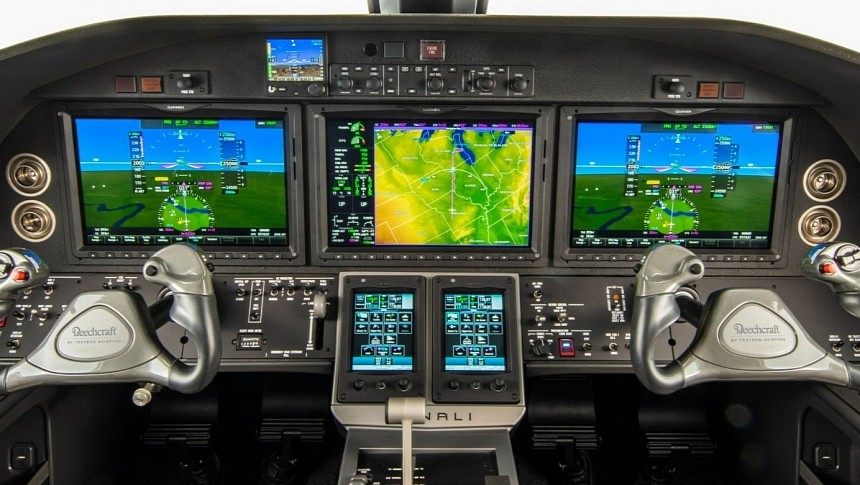Despite evolving at about the same time as the automobile industry, aviation seems to be ages ahead of carmaking in terms of systems and technologies used. Take, for instance, the autopilot system that's just making its way into cars: it has been around in planes in primitive form since the 1910s, if you can believe that.
In terms of pretty much everything, these advanced systems make airplanes a lot safer than cars. Sure, one could argue that when tragedy strikes the aftermath is far more devastating than in a car crash, but you do have to keep in mind tragedy strikes fairly rarely in the aviation industry.
There is one thing automated systems can't completely do on their own though, and that's landing by themselves. True, large jest do have automated landing systems, but pilot input and supervision are required. When it comes to smaller aircraft, we’re only now beginning to scratch the surface of what's possible.
It's Garmin that’s at the front of this research, having started in the early 2010s a project that eventually led to the creation of something we now know as the Garmin Emergency Autoland.
Like its name says, it's a feature meant to allow aircraft to land themselves. Part of the G3000 suite of avionics for light aircraft, the tech is described as the "world’s first certified system of its kind."
Already tested on Cessnas, Hondas and other aircraft, the Autoland has just been announced as a feature in the new Beechcraft Denali single-engine turboprop. But what does this thing do, exactly?
Well, unlike jet autoland systems, Garmin's needs no supervision to work. If a pilot becomes incapacitated, it can determine that and automatically engage. Separately, passengers in the plane can turn it on as well, if they know where it is on the plane's instrument panel.
From there the aircraft needs no human pilot to operate. It will look for the nearest and most suitable airport, with the decision made based on distance, runway length, and remaining fuel, among others.
Once the airport is chosen, the system points the aircraft in that direction, clearing whatever hazardous terrain or adverse weather might be on the way. Once it's there, the system lands the plane and stops it.
During all this time the Garmin Autoland informs both the passengers in the plane and air traffic control of what it's doing. Should the pilot recover or the system no longer be required for some other reason, it can easily be switched off.
As for the new plane that will get it, the single-engine Denali uses the new 1,300 shaft horsepower GE Catalyst powerplant capable of running on Sustainable Aviation Fuel (SAF). It will be able to travel for 1,841 miles (2,962 km) on a single outing and at speeds of 328 mph (528 kph).
The plane is expected to receive full certification in 2025. Since its development began, three test aircraft have completed more than 1,300 flight hours.
There is one thing automated systems can't completely do on their own though, and that's landing by themselves. True, large jest do have automated landing systems, but pilot input and supervision are required. When it comes to smaller aircraft, we’re only now beginning to scratch the surface of what's possible.
It's Garmin that’s at the front of this research, having started in the early 2010s a project that eventually led to the creation of something we now know as the Garmin Emergency Autoland.
Like its name says, it's a feature meant to allow aircraft to land themselves. Part of the G3000 suite of avionics for light aircraft, the tech is described as the "world’s first certified system of its kind."
Already tested on Cessnas, Hondas and other aircraft, the Autoland has just been announced as a feature in the new Beechcraft Denali single-engine turboprop. But what does this thing do, exactly?
Well, unlike jet autoland systems, Garmin's needs no supervision to work. If a pilot becomes incapacitated, it can determine that and automatically engage. Separately, passengers in the plane can turn it on as well, if they know where it is on the plane's instrument panel.
From there the aircraft needs no human pilot to operate. It will look for the nearest and most suitable airport, with the decision made based on distance, runway length, and remaining fuel, among others.
Once the airport is chosen, the system points the aircraft in that direction, clearing whatever hazardous terrain or adverse weather might be on the way. Once it's there, the system lands the plane and stops it.
During all this time the Garmin Autoland informs both the passengers in the plane and air traffic control of what it's doing. Should the pilot recover or the system no longer be required for some other reason, it can easily be switched off.
As for the new plane that will get it, the single-engine Denali uses the new 1,300 shaft horsepower GE Catalyst powerplant capable of running on Sustainable Aviation Fuel (SAF). It will be able to travel for 1,841 miles (2,962 km) on a single outing and at speeds of 328 mph (528 kph).
The plane is expected to receive full certification in 2025. Since its development began, three test aircraft have completed more than 1,300 flight hours.






